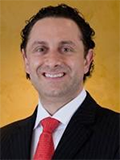Acne vulgaris is the most common skin disease affecting approximately 80% of Americans. Twenty percent of those affected experience the more severe forms of acne. This psychologically debilitating problem affects primarily teenagers and adult women alike.
The main common causative factor is a genetic predisposition to the condition. Other components of the disease include the P. acne bacteria, overactive oil glands, malfunction of the pore clearing mechanisms, hormonal disturbances, and inflammation.
Active acne outbreaks also cause inflammation of the skin and subcutaneous tissue leading to the deposition of pigment and spots at previous outbreak sites. Unchecked, this inflammation is also a major contributor to the characteristic scarring of the cheek or temple area. Treatment regimens that do not address each of these components lead to early recurrence, disappointment & psychological stress. While chronic in nature, acne scars of the face can also be very debilitating to patients and their self-esteem.
Todays over the counter acne treatments typically address the bacterial component of acne and clogged pores but leave other components untreated. The sebaceous gland over-activity, hormonal component, and pigmentation issues are rarely addressed without prescription strength medicines. Treatment regimens that do not address each of these components predictably lead to early recurrence and disappointment. Prescription strength skincare and facial peels are the basis of a proactive acne program. A program that addresses all four causes is typically most successful in mild to moderate cases.
Some of the medications typically used include retinoid-like medications for suppression of the sebaceous gland, benzoyl peroxide and topical and oral antibiotics for treating P. Acne, exfoliators like salicylic acid to address pore dysfunction, and spironolactone or oral contraceptives for hormonal imbalances. In more severe cases, oral Accutane or photo-therapy treatments are useful adjuncts to other commonly used medicines. Recently, the side effects associated with isotretinoin use have led to diminished popularity with patients and doctors alike. High dose regimens of oral isotretinoin have been shown in recent studies to decrease recurrence without increasing side effects. Phototherapies with broad band light or lasers with or without photosensitizing medicines have risen in popularity to fill this gap.
Photodynamic therapy combines various broad band light wavelengths with Levulan® to suppress the bacteria and oil glands. This treatment is usually done in a series two weeks apart and works by selectively destroying the P. acne and sebaceous glands when exposed to light. A period of 5-6 months of decreased outbreaks and reduced oil production is typical after a series of treatments.
Acne scarring, the long term sequelae of poorly managed acne is one of the most underestimated conditions in terms of its negative effect on self-esteem. The characteristic tethered, depressed or “ice-pick” scars can be very disconcerting to patients. In the past, aggressive resurfacing procedures such as Dermabrasion or laser resurfacing were used to improve their appearance. While effective, these treatments were associated with prolonged recovery and were not applicable in darker skin types. Surgical release of scars is also a useful adjunct. Contemporary acne scar management utilizes fractional lasers to partially resurface the skin while reducing downtime. This treatment stimulates collagen production to improve scars while leaving areas of normal skin to accelerate healing. This version of laser resurfacing is also well tolerated in darker skin types without the side effects of earlier resurfacing treatments. Experimentally, Platelet Rich Plasma or PRP is being combined with laser treatments to improve outcomes and to reduce recovery after a resurfacing procedure. While still a challenging condition to treat, a concerted effort at addressing each of the components of acne can lead to significant clinical improvement and patient satisfaction. For additional information visit bitarinstitute.com.

George Bitar, MD, FACS is an award-winning, board-certified cosmetic and reconstructive plastic surgeon, the Founder and Medical Director of Bitar Cosmetic Surgery Institute in Virginia. He specializes in the latest surgical and minimally invasive techniques to scar management and reduction. Dr. Bitar is involved in groundbreaking research and education in plastic surgery and has authored numerous articles, abstracts, and chapters.





